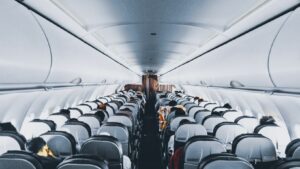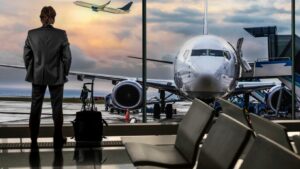Embarking on a long-haul flight can be a daunting experience, even for the most seasoned travelers. The thought of spending hours confined to an airplane seat often evokes a mix of excitement and dread. However, with the right preparation and mindset, flying across time zones doesn’t have to be a grueling ordeal. From packing essentials to navigating jet lag, mastering the art of long flights is an invaluable skill for any globetrotter.
This article dives into practical travel tips that promise to transform your flying experience. Whether it’s selecting the perfect seat or curating a carry-on that caters to every need, these strategies are designed to enhance comfort and well-being at 35,000 feet. So, buckle up and prepare to make your next long flight not just bearable, but enjoyable.
Travel Tips For Long Flights
Following the discussion on overcoming the challenges of long-haul flights, this section delves into actionable travel tips. These suggestions aim to enhance the flying experience by focusing on seat selection, sleep management, and maintaining hydration and nourishment. By considering these aspects, travelers can make long flights more comfortable and enjoyable.
Choosing the Right Seat
 Selecting an optimal seat is crucial for comfort during long flights. Passengers should consider their personal preferences and needs when making their selection. For those who value uninterrupted sleep, window seats offer a wall to lean against and control over the window shade. Conversely, aisle seats provide easier access to the bathroom and the cabin aisle, allowing for more freedom to stretch and move around. Exit row seats or those in the premium economy section offer additional legroom, which can significantly enhance comfort on long flights.
Selecting an optimal seat is crucial for comfort during long flights. Passengers should consider their personal preferences and needs when making their selection. For those who value uninterrupted sleep, window seats offer a wall to lean against and control over the window shade. Conversely, aisle seats provide easier access to the bathroom and the cabin aisle, allowing for more freedom to stretch and move around. Exit row seats or those in the premium economy section offer additional legroom, which can significantly enhance comfort on long flights.
Achieving restful sleep on long flights is essential for arriving at the destination feeling refreshed. Travelers can improve their chances of sleeping well by bringing a few key items on board. A comfortable neck pillow, noise-cancelling headphones, and a sleep mask can significantly enhance sleep quality by providing neck support, blocking out cabin noise, and eliminating light. Adjusting a watch to the destination’s timezone upon boarding can also help in syncing one’s body clock, making it easier to fall asleep at the appropriate time. Lastly, avoiding caffeinated beverages and alcohol before and during the flight can prevent sleep disruptions.
Packing Smart for Long-Haul Comfort
Packing smart is essential for ensuring long-haul comfort. This section builds upon previous tips by focusing on two critical areas: what to include in your carry-on and the best attire to wear during the flight. These guidelines aim to enhance your overall flying experience.
Carry-on Must-Haves
 For carry-on luggage, selecting items that prioritize comfort and convenience is key. Here’s a list of essentials:
For carry-on luggage, selecting items that prioritize comfort and convenience is key. Here’s a list of essentials:
- Noise-cancelling headphones offer a respite from the constant engine noise and chatter.
- A high-quality travel pillow supports your neck, preventing soreness.
- Sleep masks and earplugs ensure uninterrupted sleep by blocking out cabin light and noise.
- E-readers or tablets loaded with movies, books, and games keep you entertained.
- Hydration items, such as a refillable water bottle and moisturizer, combat the dry cabin air.
- Snacks, like nuts and fruit, keep hunger at bay without relying solely on airline food.
- Travel documents organizer keeps important paperwork and passports easily accessible and secure.
Each item serves a distinct purpose, enhancing comfort, entertainment, or organization during the flight.
The Right Attire for an Extended Flight
 Choosing the right clothing can significantly impact your comfort on a long flight. Opt for:
Choosing the right clothing can significantly impact your comfort on a long flight. Opt for:
- Layered clothing, which allows you to easily adjust to the plane’s changing temperatures. A breathable base layer topped with a sweater or light jacket is ideal.
- Loose-fitting garments made from soft, stretchable fabric offer freedom of movement and prevent any constriction.
- Compression socks stimulate blood circulation in the legs, reducing the risk of deep vein thrombosis (DVT) and swelling.
- Comfortable footwear that can be easily removed or put on helps manage security checks and in-flight comfort. Slippers or slip-on shoes are recommended for walking around the cabin.
- A scarf or shawl provides extra warmth and can double as a blanket or a makeshift pillow.
Selecting attire that combines comfort with practicality ensures a more pleasant flying experience, allowing travelers to arrive at their destination feeling rested and refreshed.

